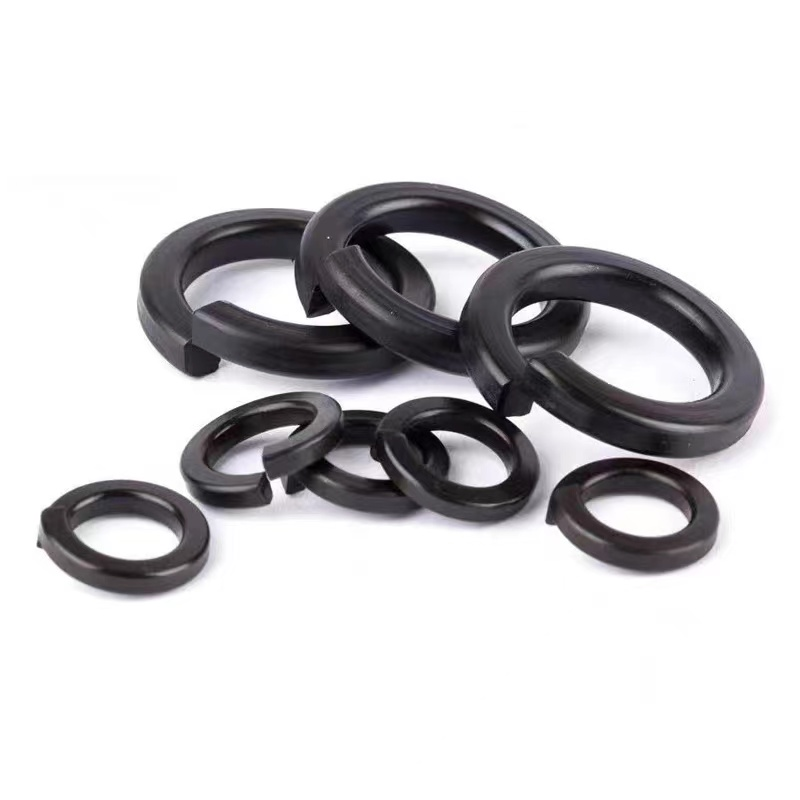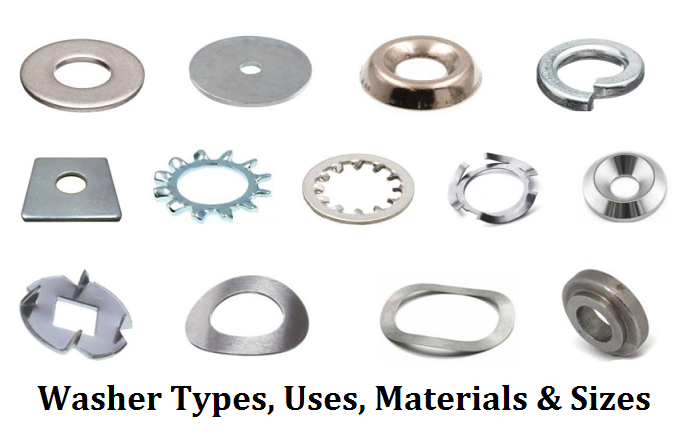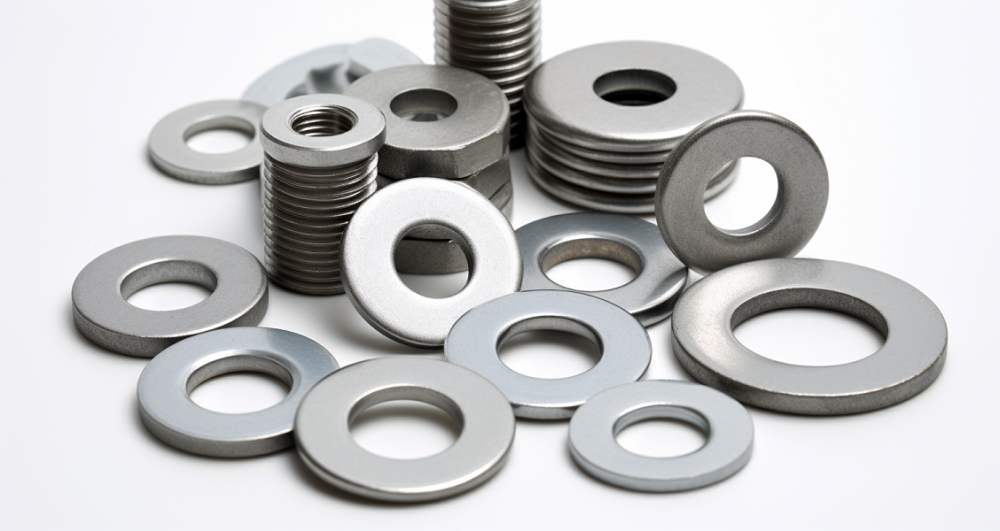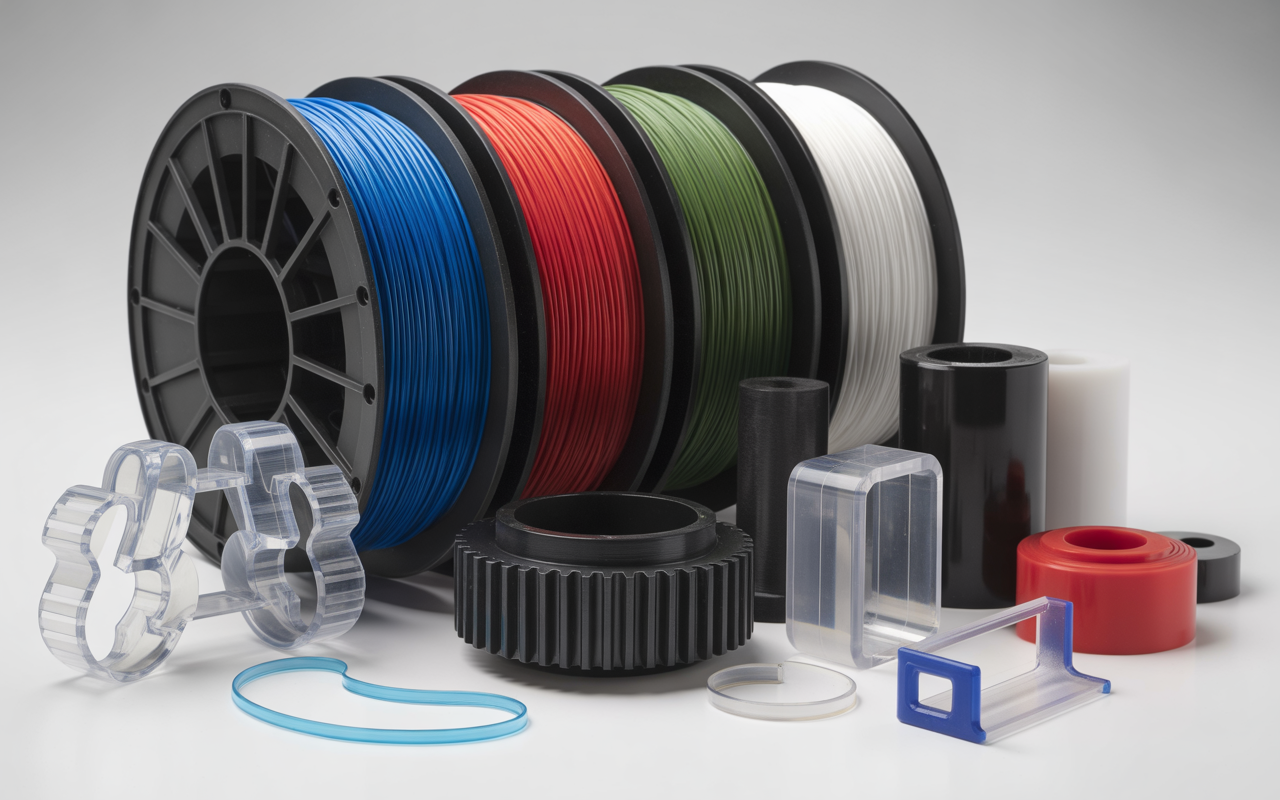Fastener loosening is a persistent challenge across many industries. Solutions like plain washers, adhesives, and locking wires are sometimes used, but their effectiveness can vary and often depends on installation skill. Locking washers are designed to provide a more reliable and efficient way to keep fasteners secure, especially in assemblies exposed to vibration or fluctuating loads.
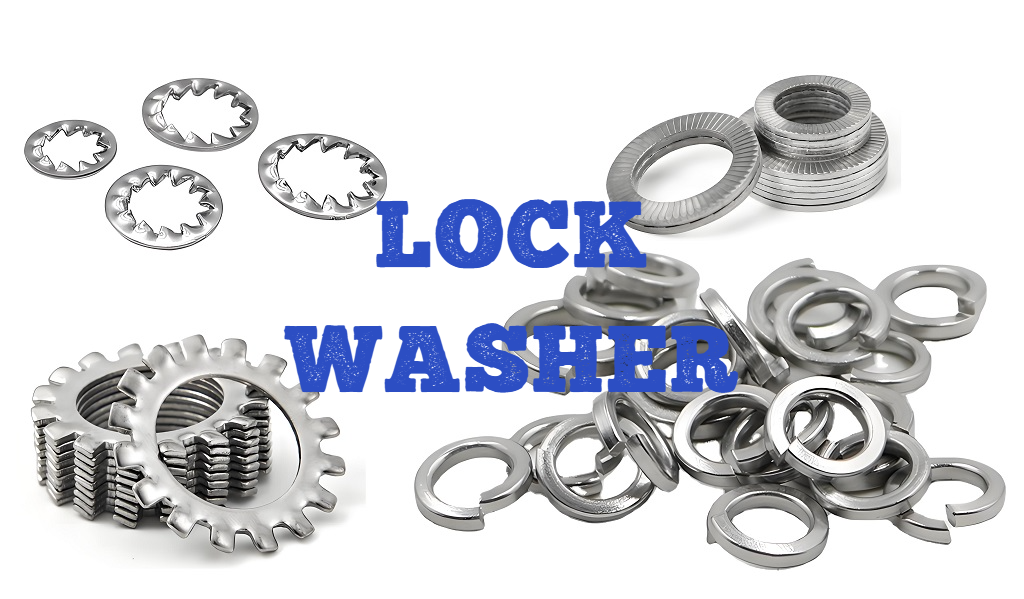
Lock washers look simple, yet they sit at the heart of reliable bolted joints. In vibration, impact, heat cycles, and settling, clamp load is what keeps a joint tight. Practical tests show that many common solutions that rely on friction can lose tension within seconds, forcing re-tightening and risking downtime. Here we organise the key facts, demonstrations, and standards-based notes into a single, practical reference on what lock washers are, how they work, their types, dimensions, and when to use split/spring, wedge, and tooth designs.
1. What is a Lock Washer?
Lock washers are specialised washers designed to prevent fasteners, such as bolts and nuts, from loosening under vibration or dynamic loads. These fastener components are typically installed between the bolt head or nut and the connected surface, providing a secure and stable joint.
How Does a Lock Washer Work?
The locking principle of a lock washer depends on its design. For example, spring types use their elastic deformation to generate a spring force when compressed, which increases the friction and resistance torque between the nut and bolt. This friction and mechanical engagement help maintain the integrity of the joint, even under stress or vibration.
What Does a Lock Washer Do?
Locking washer’s main function and purpose is to maintain the tension in a bolted joint, preventing rotation or movement that could cause the fastener to loosen. By increasing friction or creating a mechanical lock, lock washers help keep connections tight and secure. Some designs, such as wedge lock washers, use a pair of washers that interact to create a wedge effect, further securing the assembly.
Where Does a Lock Washer Go?
A lock washer is typically placed under the nut or bolt head, directly contacting the surface of the part being fastened. For enhanced security, they can also be used in combination with flat washers.
How to Use a Lock Washer?
To use a lock washer, slide it onto the bolt shaft after inserting the bolt through the workpiece. Place the nut on the bolt and tighten it. As you apply torque, the lock washer deforms or engages its locking features, increasing resistance to loosening. In practice, using a lock washer with a flat washer is common, as this combination increases anti-loosening effectiveness and accommodates a wider range of assembly conditions.
2. Lock Washer Types and Uses
Lock washers are designed in a variety of forms to address different fastening challenges. Each type offers a unique mechanism and utility to keep fasteners secure under vibration, shock, or frequent adjustment. Below are the three most common types of lock washers, described in terms of their structure, operating principle, function, and typical applications.
Split Lock Washer (Spring Lock Washer)
A split lock washer, also commonly referred to as a spring lock washer, is a ring-shaped washer featuring a single split and a helical twist. The design provides elasticity and creates a spring effect when compressed. High collar versions are available, which are thicker and deliver higher pressure.
Working Principle (How It Works):
When a nut or bolt is tightened over a split lock washer, the washer compresses and flattens out, generating a spring force. This force increases friction between the fastener and the assembly surface. The sharp corners at the split can embed into the surfaces, further restricting the nut or bolt from turning loose. The washer absorbs some of the energy from vibration or shock, reducing the risk of the connection coming loose.
Function (How & When To Use It):
Split lock washers are used to secure fasteners in assemblies that experience vibration, moderate impact, or require repeated assembly and disassembly. They provide a preload by elastically deforming, and their reaction force increases the axial tension between connections. This extra friction prevents fasteners from loosening under normal vibration conditions. They are quick to install and suitable for applications where ease of disassembly is important.
Application (Where To Use It):
This washer is widely used in machinery manufacturing, automotive repair, household appliances, and building installation. It is suitable for general fastening needs, machinery that must be assembled and disassembled frequently, and temporary structural connections. However, their anti-loosening effectiveness can be reduced in high-vibration or high-preload environments.
Split Lock Washer Types
Standard Spring Split Lock Washer
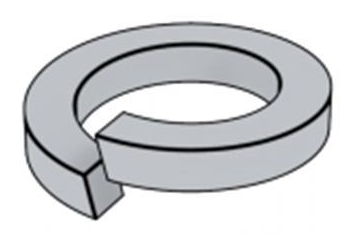
Standard spring washers are the most commonly used type of washers in the market. In the bolting industry, spring washers are often called spring washers. They are widely used in both load-bearing and non-load-bearing structures in general mechanical products. They are low-cost, easy to install, and suitable for frequent assembly and disassembly.
Saddle Spring Split Lock Washer
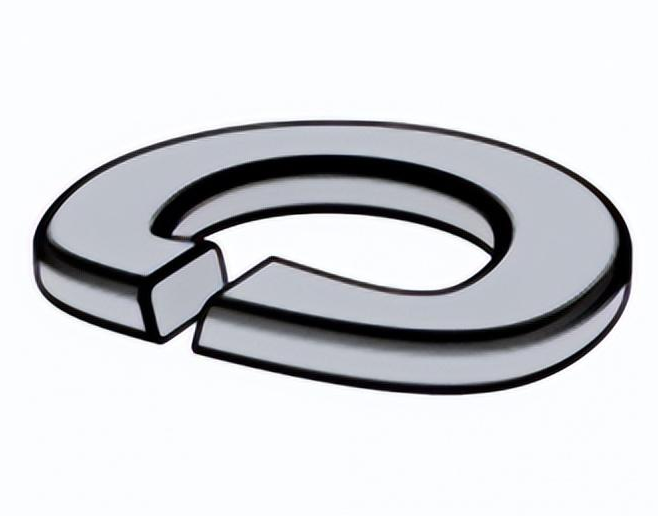
Saddle spring washers are horseshoe-shaped washers primarily used to prevent bolt loosening. They utilize their unique saddle-shaped structure to increase friction and prevent the fastener from falling out. Like other wave spring washers and stainless steel spring washers, saddle spring washers offer excellent anti-loosening properties.
Wave Spring Split Lock Washer
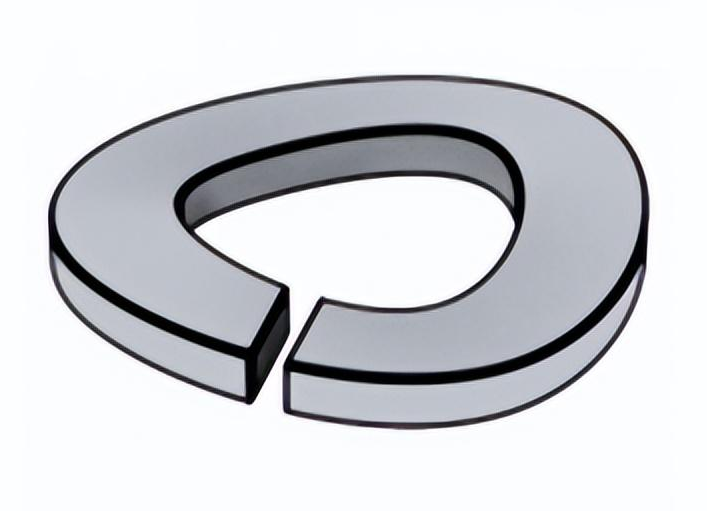
Wave spring washers are a common mechanical seal component, typically made of metal and shaped like a wave. They possess excellent elasticity and sealing properties. Their elastic deformation allows them to return to their original shape and maintain close contact when subjected to force, thus achieving a sealing effect. They are suitable for a variety of static and dynamic sealing applications.
Wedge Lock Washer
A wedge lock washer is made up of two washers with wedge-shaped cams on one side and radial serrations on the other. The cam angle is specifically designed to be greater than the pitch of the bolt’s thread, establishing a wedging action.

Working Principle (How It Works):
When installed as a pair under the head of a bolt or nut, the cams interlock. As the bolt is tightened, the wedge-shaped teeth create a continuous tension that keeps the fastener secure. If loosening occurs, the cams force the bolt or nut upward, increasing tension and maintaining clamp load. The radial serrations bite into both the fastener and the assembly surface, offering an additional locking effect. This system does not depend on friction alone and remains effective even if lubrication is present.
Function (How & When To Use It):
Wedge lock washers are used to maintain bolt tension and prevent loosening in high-vibration or shock-prone environments. They are reusable after disassembly and provide a stable clamp force, even after repeated tightening and removal. Proper installation requires the upper and lower washers to be paired and aligned correctly.
Application (Where To Use It):
Wedge lock washers are used in wind power equipment, rail transit, heavy machinery, and aerospace assemblies. These washers are chosen for connections that must withstand extreme vibration or where reliability is paramount, such as wind turbine towers, rail vehicle bogies, and mining machinery.
Tooth Lock Washer
Tooth lock washers are thin washers with serrated or toothed edges. There are two main types: internal tooth washers, which have prongs on the inner circumference, and external tooth washers, with prongs around the outside. They can also have a corrugated or wave shape for additional elasticity.
Working Principle (How It Works):
The serrated teeth deform and bite into the nut or bolt and the mating surface as the fastener is tightened. This mechanical engagement increases friction and holds the fastener in place. Internal tooth washers are typically used under smaller screw heads, while external tooth versions are placed under larger bolt heads or nuts.
Function (How & When To Use It):
Tooth lock washers are used to prevent bolts and nuts from loosening under vibration or shock. Their structure allows them to absorb some of the energy from vibration, reducing the tendency for loosening. They are particularly effective for assemblies where electrical grounding or a stable fastening mechanism is required.
Application (Where To Use It):
Common applications include automotive manufacturing for chassis connections, mechanical engineering for vibrating equipment, aerospace for precision assemblies, and construction for scaffolding and joints requiring high preload. They are also frequently used in electronics, where reliable contact and secure fastening are important.
Tooth Lock Washer Types
Internal Tooth Lock Washer
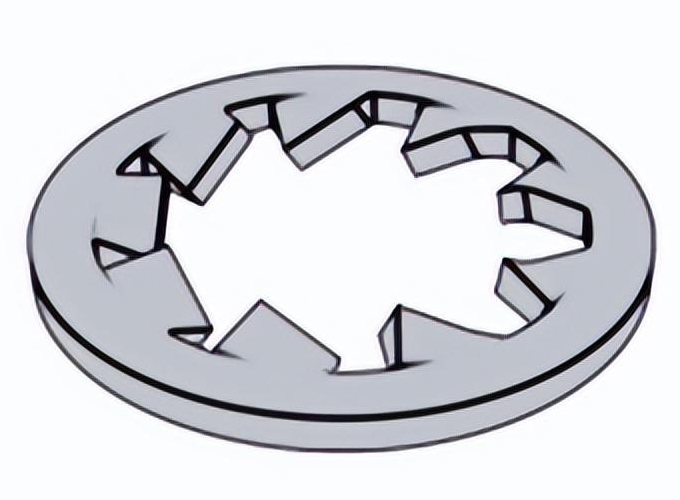
Internal tooth lock washers are a common fastener widely used in mechanical equipment. Their working principle is to tighten and secure parts through an internal gear structure. The working principle can be simply divided into two steps: locking and unlocking. Under normal operating conditions, internal tooth lock washers maintain a tight fit, preventing loosening and thread slippage, ensuring the normal operation of the mechanical equipment.
External Tooth Lock Washer
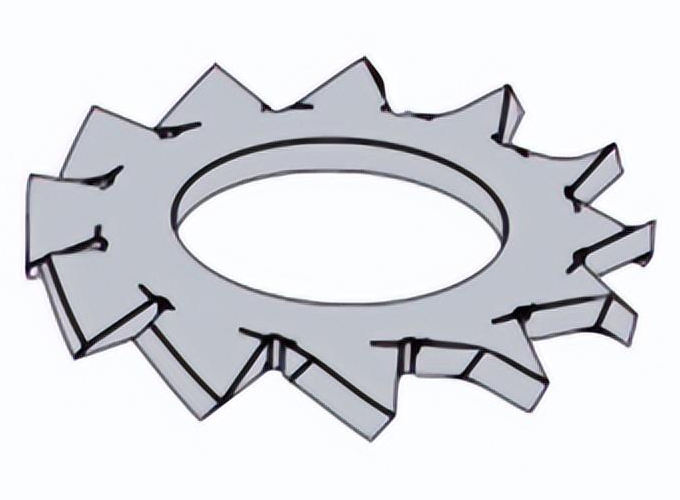
External tooth lock washers are commonly used in mechanical component connections. Their working principle is similar to that of internal tooth lock washers, relying on the meshing force between the tooth tips and the flat surface of the connected part, combined with a small amount of elasticity, to prevent threaded connections from loosening. External tooth lock washers are typically made of high-strength materials such as stainless steel, aluminum alloy, or copper alloy, and have excellent mechanical properties and corrosion resistance.
Internal Serrated Lock Washer
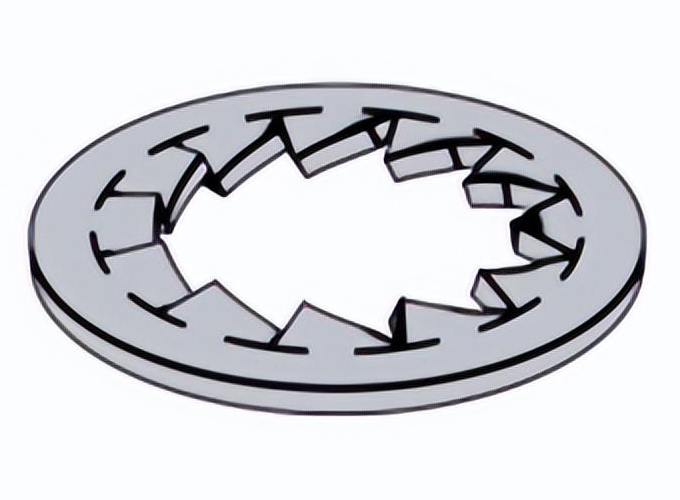
Internal serrated lock washers, as the name suggests, have internal serrations and are commonly used to connect fasteners and other components. Its special design enables it to provide higher locking force when the connection is subjected to vibration or external forces. Internally serrated lock washers are typically made of metal or an elastomer and feature multiple internal serrations. These serrations increase friction between the washer and the connection, providing additional resistance and preventing the fastener from loosening.
External Serrated Lock Washer
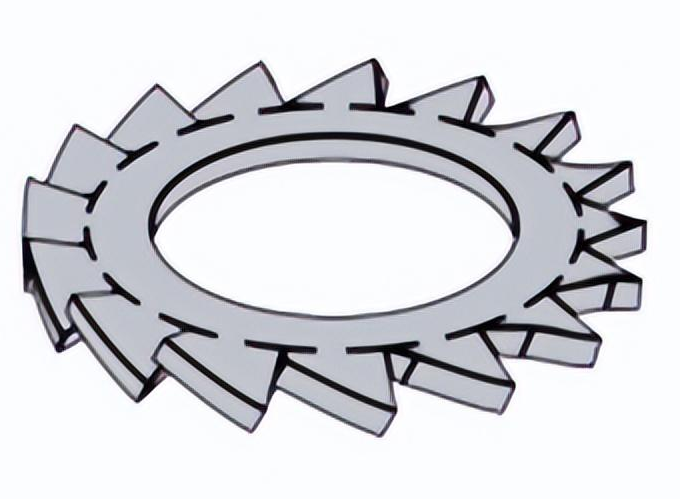
External serrated lock washers are used as springs on small components. Their dimensions are similar to those of the fastening screws and self-tapping screws used with three-dimensional sheet metal stampings. Serrated washers are primarily used to prevent bolts from loosening. They are primarily used to tighten components under bolt heads or nuts. This product conforms to ISO standards and is a single ring washer with offset openings.
3. Lock Washer Size Chart
Lock washers are produced according to several standards, in a wide range of sizes and materials to suit various fastener diameters, performance properties, and application requirements. Selecting the right size is important for optimal performance and fit. This section summarizes typical dimension series so you can match washers to bolt sizes and select thickness profiles. Always verify against the governing standard/spec for your project. Below we will sort out the standard dimensions for each type of lock washers:
Split/Spring Lock Washer Dimensions
- Nominal bolt sizes: M3–M24 (metric) and #4–1 in (inch)
- Key dimensions:
- Inner diameter (d): matches screw major diameter clearance
- Outer diameter (D): sized for bearing area
- Thickness (t): standard and high-collar types; high-collar is thicker and stiffer
- Notes: The “high collar” series has increased thickness to apply higher pressure and resist flattening.
Metric Split Lock Washer Size Chart (DIN 127B)
| Nominal Size | Inside Diameter (A) Min | Inside Diameter (A) Max | Outside Diameter (B) Max | Section Thickness (T) Ref | Section Width (W) Ref |
|---|---|---|---|---|---|
| M2 | 2.1 | 2.4 | 4.4 | 0.50 | 0.9 |
| M2.5 | 2.6 | 2.9 | 5.1 | 0.60 | 1 |
| M3 | 3.1 | 3.4 | 6.2 | 0.80 | 1.3 |
| M4 | 4.1 | 4.4 | 7.6 | 0.90 | 1.5 |
| M5 | 5.1 | 5.4 | 9.2 | 1.20 | 1.8 |
| M6 | 6.1 | 6.5 | 11.8 | 1.60 | 2.5 |
| M8 | 8.1 | 8.5 | 14.8 | 2 | 3 |
| M10 | 10.2 | 10.7 | 18.1 | 2.2 | 3.5 |
| M12 | 12.2 | 12.7 | 21.1 | 2.5 | 4 |
| M16 | 16.2 | 17.0 | 27.4 | 3.5 | 5 |
| M20 | 20.2 | 21.2 | 33.6 | 4 | 6 |
| M24 | 24.5 | 25.5 | 40 | 5 | 7 |
| M30 | 30.5 | 31.7 | 48.2 | 6 | 8 |
| M36 | 36.5 | 37.7 | 58.2 | 6 | 10 |
| M42 | 42.5 | 43.7 | 68.2 | 7 | 12 |
| M48 | 49 | 50.5 | 75 | 7 | 12 |
Split Lock Washer Dimensions (Inches)
| Nominal Washer Size | Inside Diameter (ID) Max | Inside Diameter (ID) Min | Outside Diameter (OD) Max | Outside Diameter (OD) Min | Mean Section Thickness Min | Section Width Max |
|---|---|---|---|---|---|---|
| #2 | 0.094 | 0.086 | 0.172 | 0.088 | 0.020 | 0.035 |
| #3 | 0.107 | 0.099 | 0.195 | 0.101 | 0.025 | 0.040 |
| #4 | 0.120 | 0.112 | 0.209 | 0.114 | 0.025 | 0.040 |
| #5 | 0.133 | 0.125 | 0.236 | 0.127 | 0.031 | 0.047 |
| #6 | 0.148 | 0.138 | 0.250 | 0.141 | 0.031 | 0.047 |
| #8 | 0.174 | 0.164 | 0.293 | 0.167 | 0.040 | 0.055 |
| #10 | 0.200 | 0.190 | 0.334 | 0.193 | 0.047 | 0.062 |
| #12 | 0.227 | 0.216 | 0.377 | 0.220 | 0.056 | 0.070 |
| 1/4 | 0.260 | 0.250 | 0.487 | 0.252 | 0.062 | 0.109 |
| 5/16 | 0.322 | 0.312 | 0.583 | 0.314 | 0.078 | 0.125 |
| 3/8 | 0.385 | 0.375 | 0.680 | 0.377 | 0.094 | 0.141 |
| 7/16 | 0.450 | 0.438 | 0.776 | 0.440 | 0.109 | 0.156 |
| 1/2 | 0.512 | 0.500 | 0.869 | 0.502 | 0.125 | 0.171 |
| 9/16 | 0.574 | 0.562 | 0.965 | 0.564 | 0.141 | 0.188 |
| 5/8 | 0.641 | 0.625 | 1.073 | 0.628 | 0.156 | 0.203 |
| 3/4 | 0.766 | 0.750 | 1.265 | 0.753 | 0.188 | 0.234 |
| 7/8 | 0.894 | 0.875 | 1.459 | 0.878 | 0.219 | 0.266 |
| 1 | 1.024 | 1.000 | 1.656 | 1.003 | 0.250 | 0.297 |
| 1-1/8 | 1.153 | 1.125 | 1.847 | 1.129 | 0.281 | 0.328 |
| 1-1/4 | 1.280 | 1.250 | 2.036 | 1.254 | 0.312 | 0.359 |
| 1-3/8 | 1.408 | 1.375 | 2.219 | 1.379 | 0.344 | 0.391 |
| 1-1/2 | 1.534 | 1.500 | 2.419 | 1.504 | 0.375 | 0.422 |
| 1-3/4 | 1.789 | 1.750 | 2.679 | 1.758 | 0.389 | 0.424 |
| 2 | 2.039 | 2.000 | 2.936 | 2.008 | 0.422 | 0. |
Wedge Lock Washer Dimensions
- Nominal bolt sizes: M3–M72 typical product families
- Key dimensions (per pair):
- Inner diameter d: bolt clearance
- Outer diameter D: bearing area sized to head or nut
- Pair thickness T: combined height of the two washers
- Notes: Supplied as matched pairs; select stainless or steel according to environment. Cam angle is engineered to exceed the thread pitch angle.
Metric Split Lock Washer Size Chart (DIN 25201)
| Size | Inner Diameter (d) (mm) | Outer Diameter (D) (mm) | Thickness (T) (mm) |
|---|---|---|---|
| M3 | 3.4 | 7.0 | 1.8 |
| M3.5 | 3.9 | 7.6 | 1.8 |
| M4 | 4.4 | 7.6 | 1.8 |
| M5 | 5.4 | 9.0 | 1.8 |
| M6 | 6.5 | 10.8 | 1.8 |
| M8 | 8.7 | 13.5 | 2.5 |
| M10 | 10.7 | 16.6 | 2.5 |
| M12 | 13.0 | 19.5 | 2.5 |
| M14 | 15.2 | 23.0 | 3.4 |
| M16 | 17.0 | 25.4 | 3.4 |
| M18 | 19.5 | 29.0 | 3.4 |
| M20 | 21.4 | 30.7 | 3.4 |
Tooth Lock Washer Dimensions
- Internal tooth (e.g., DIN 6797, DIN 6798):
- Specification range: inner diameters around 2–20 mm series
- Tooth geometry: tooth angle roughly 75–85°, tooth height-to-pitch about 1:2
- After heat treatment: hardness typically HRC42–50 with elastic limit targets
- External tooth (e.g., DIN 6798 A):
- Specification range: common Φ3–Φ20 mm and corresponding inch sizes
- Materials and finishes: carbon steel, 65Mn, 304/316 stainless; phosphating, zinc, Dacromet, nickel
- Key dimensions (per pair):
- d min: Minimum inner diameter
- D max: Maximum outer diameter
- s: Thickness
- Notes: Choose internal teeth for small screw heads or where the outside face must be smooth; external teeth for broader engagement and bite.
Metric Tooth Lock Washer Size Chart (Type A / DIN 6797)
| For Metric Screws | d min (mm) | D max (mm) | s (mm) | No. Teeth (min) |
|---|---|---|---|---|
| M1.6 | 1.7 | 3.6 | 0.3 | 6 |
| M2 | 2.2 | 4.5 | 0.3 | 6 |
| M2.5 | 2.7 | 5.5 | 0.4 | 6 |
| M2.6 | 2.8 | 5.5 | 0.4 | 6 |
| M3 | 3.2 | 6.0 | 0.4 | 6 |
| M3.5 | 3.7 | 7.0 | 0.5 | 6 |
| M4 | 4.3 | 8.0 | 0.5 | 8 |
| M5 | 5.1 | 9.0 | 0.5 | 8 |
| M5 | 5.3 | 9.0 | 0.6 | 8 |
| M6 | 6.4 | 10.0 | 0.7 | 8 |
| M7 | 7.4 | 12.5 | 0.8 | 8 |
| M8 | 8.2 | 12.5 | 0.8 | 8 |
| M8 | 8.4 | 14.0 | 0.8 | 8 |
| M10 | 10.5 | 18.0 | 0.9 | 9 |
| M12 | 12.5 | 18.0 | 1.0 | 10 |
| M12 | 13.0 | 20.5 | 1.0 | 10 |
| M14 | 15.0 | 24.0 | 1.0 | 10 |
| M16 | 17.0 | 26.0 | 1.2 | 12 |
| M18 | 19.0 | 30.0 | 1.4 | 12 |
| M20 | 21.0 | 33.0 | 1.4 | 12 |
| M22 | 23.0 | 36.0 | 1.5 | 14 |
| M24 | 25.0 | 38.0 | 1.5 | 14 |
| M27 | 28.0 | 44.0 | 1.6 | 14 |
| M30 | 31.0 | 48.0 | 1.6 | 14 |
4. Lock Washer Standards & Materials
Lock washers are manufactured based on standards that define their dimensions, materials, and performance. Some of the common standards include:
- ASME B18.21.1: Covers helical spring lock washers, tooth lock washers, and plain washers in inch series, specifying their dimensions and testing methods.
- ASME B18.21.2M: Covers metric lock washers.
- DIN 127A/B, DIN 128A, DIN 6797, DIN 6798A, DIN 7980: Widely used European standards for spring and tooth lock washers.
Lock washers are typically made from:
- Carbon steel
- Spring steel
- Stainless steel (A2, A4, 300 and 400 series)
- Phosphor bronze
- Silicon bronze
Surface treatments like phosphating, zinc plating, and nickel plating may be applied to improve corrosion resistance.
5. Split/Spring Lock Washer vs Wedge Lock Washer vs Tooth Lock Washer: What are the Differences?
The choice between split, wedge, and tooth lock washers depends on the application’s vibration level, required preload, and assembly importance. Here is a comparison:
| Feature | Split/Spring Lock Washer | Wedge Lock Washer | Tooth Lock Washer |
|---|---|---|---|
| Locking Mechanism | Elastic preload with edge bite; friction-assisted. | Cam wedge geometry; locks by angle greater than thread pitch; not dependent on friction; unaffected by lubrication. | Serrated teeth bite into surfaces; friction plus mechanical meshing. |
| Vibration Resistance | Basic anti-loosening in general vibration; improved “feel” after break-loose (not finger-loosened immediately). | High and stable clamp load after initial settlements; no unintentional rotation in repeat tests; no re-tightening needed. | Suitable for light to moderate vibration; results can vary in very low torque, high-vibration rigs. |
| Installation | Single washer; often used with a flat washer; high-collar available. | Always a matched pair, cams facing each other; serrations against mating faces. | Internal for small heads/clean outside; external for larger flange effect; ensure teeth can engage the mating face. |
| Reusability | Reusable, repeated use may slightly change behavior but remained serviceable in small trials. | Reusable, cam impressions indicate proper seating. | Reusable, but may deform after cycles |
| Cost & Complexity | Low cost; simple | Higher cost; superior locking in severe vibration; easy to inspect. | Low to moderate cost; easy to apply; surface-sensitive. |
| Applications | General machinery, vehicles | Heavy machinery, wind turbines | Automotive, electronics, sheet metal |
6. Split/Spring vs Wedge vs Tooth Lock Washer: What is the Strongest Way To Secure a Bolt?
Comparative testing and field experience indicate that wedge lock washers offer the most reliable solution for securing bolts, particularly in environments with extreme vibration or safety requirements. Their wedge effect keeps the clamp load stable and resists loosening more effectively than spring or tooth designs. Split lock washers are suitable for moderate vibration and assemblies that are frequently taken apart. Tooth lock washers serve well for moderate loads, especially where electrical contact or extra grip is needed.
When maximum security is required, such as in wind power, rail transit, or aerospace, wedge lock washers are the best choice. For general fastening, split and tooth lock washers deliver practical, cost-effective performance.


